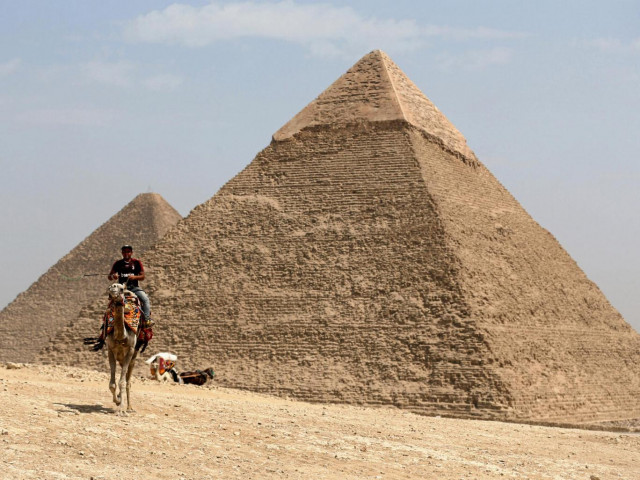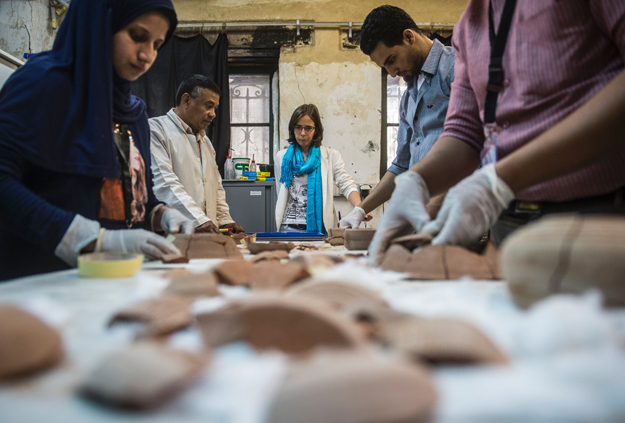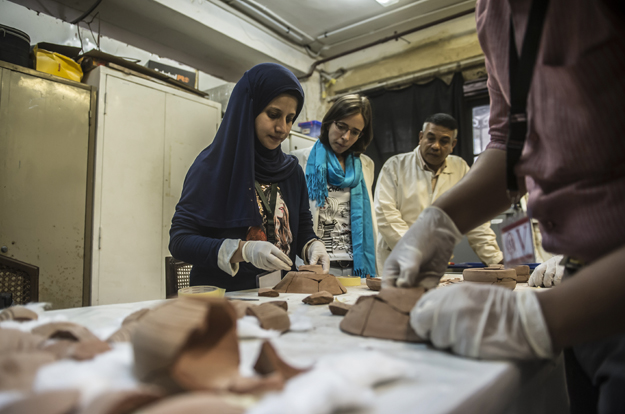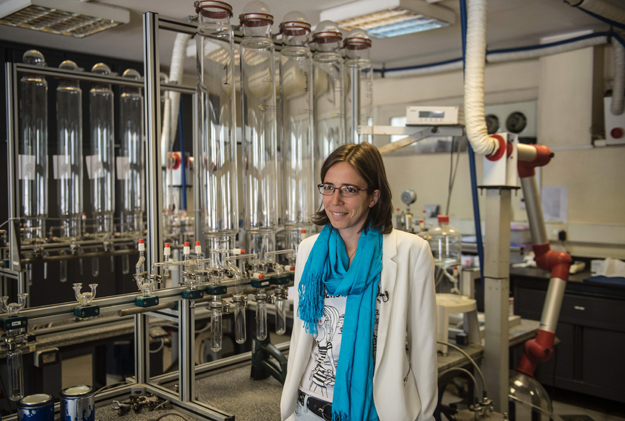Egyptologists go high tech to unlock ancient mysteries
ScanPyramids is among the most ambitious of the projects to demystify the Khufu Pyramid near Cairo

The Great Giza pyramids on the outskirts of Cairo. PHOTO: REUTERS
For more than 200 years since Napoleon Bonaparte landed in Egypt with a retinue of scholars who laid the groundwork for modern Egyptology, experts have used science to unlock the secrets of the country's ancient treasures.
In the 21st century, the scientists have been using electronic devices and chemical testing to date artefacts.
Restoration of Kot Diji Fort planned
Chemical testing still requires small samples, but advanced techniques coming into use are meant to be non-invasive so as not to damage the ancient relics.
 French Anita Quiles, a researcher in the French Institute of Eastern Archaeology (IFAO) in Cairo, stands near local staff at a dating laboratory inside the institut on May 14, 2017. PHOTO: AFP
French Anita Quiles, a researcher in the French Institute of Eastern Archaeology (IFAO) in Cairo, stands near local staff at a dating laboratory inside the institut on May 14, 2017. PHOTO: AFPScanPyramids is among the most ambitious of the projects to demystify the Khufu Pyramid near Cairo, the only surviving monument from the ancient Seven Wonders of the World.
It has employed infrared thermography and muography -- a technique that records images using muon particles -- in its quest.
The project had announced last October that the massive pyramid may contain undiscovered recesses.
A Chinese 3D print studio fuses ancient art with modern tech
"All the devices we put in place are designed to find where the cavity is located. We know there is one, but we're trying to find out where," said Mehdi Tayoubi, president of the HIP Institute heading the ScanPyramids project.
 French Anita Quiles, a researcher in the French Institute of Eastern Archaeology (IFAO) in Cairo, stands near local staff at a dating laboratory inside the institut on May 14, 2017. PHOTO: AFP
French Anita Quiles, a researcher in the French Institute of Eastern Archaeology (IFAO) in Cairo, stands near local staff at a dating laboratory inside the institut on May 14, 2017. PHOTO: AFPThe muon devices include chemical emulsion instruments from Japan's University of Nagoya, electronic sensors from the KEK Japanese Research Laboratory, and muon telescopes from the French Atomic Energy Commission.
The results are then compared with infrared and 3D images.
Some archaeologists have pinned hopes on the sophisticated technology to locate the burial place of the legendary queen Nefertiti.
The wife of King Akhenaten, who initiated a monotheistic cult in ancient Egypt, Nefertiti remains an enigma, best known for a bust depicting her that is now on exhibition in Berlin's Neues Museum.
A century later, Bahawalpur’s Darbar Mahal stands tall
A British Egyptologist, Nicholas Reeves, believed her remains were hidden in a secret chamber in the tomb of Tutankhamun, in the southern Valley of the Kings.
In 2015, archaeologists scanned the tomb with radar hoping for clues.
Both Reeves's theory and the inconclusive results have been dismissed by other Egyptologists.
One of them, former antiquities minister Zahi Hawass, said that an adept of the sun god Aton would never have been allowed to be buried in the Valley of the Kings.
 Egypt's former antiquities minister Zahi Hawass gives an interview with AFP at his office in Cairo on May 22, 2017. PHOTO: AFP
Egypt's former antiquities minister Zahi Hawass gives an interview with AFP at his office in Cairo on May 22, 2017. PHOTO: AFPThe excitement over the possible discovery has died down since the inconclusive results, but a team from Politecnico University in Turin, Italy, intends to give it another shot.
This time they will employ tomography -- a method used in medical scans -- and magnetometry, which measures magnetic fields.
Neither the Politecnico team nor the antiquities ministry has been inclined to discuss the fresh attempt, possibly put off by the anticlimactic media frenzy over the previous bid.
Elsewhere, Egyptologists are undertaking a project to nail down the chronology of Egypt's ancient dynasties more precisely.
The French Institute of Eastern Archaeology (IFAO) in Cairo has a dating laboratory that the researchers are putting to use for the project.
 French Anita Quiles, a researcher in the French Institute of Eastern Archaeology (IFAO) in Cairo, stands inside a dating laboratory during an interview on May 14, 2017. PHOTO: AFP
French Anita Quiles, a researcher in the French Institute of Eastern Archaeology (IFAO) in Cairo, stands inside a dating laboratory during an interview on May 14, 2017. PHOTO: AFP"The chronology of ancient Egypt is not clearly defined. We use a relative chronology," said Anita Quiles, head of research at the IFAO.
"We refer to reigns and dynasties but we do not know exactly the dates," she said.
The investigation, which involves chemical testing, is expected to take several years.
But Egyptologists say that science cannot replace archaeologists and their work on the ground.
"It is important to have science in archaeology," said Hawass.
"But it is very important not to let scientists announce any details about what they found unless it has been seen by Egyptologists."



















COMMENTS
Comments are moderated and generally will be posted if they are on-topic and not abusive.
For more information, please see our Comments FAQ